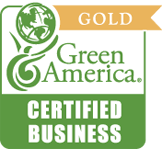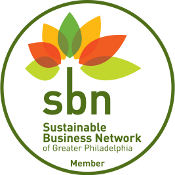HEALTH IS WEALTH
BEWARE OF HIDDEN HOUSEHOLD CHEMICALS THAT HURT YOUR FAMILY
You’ve spent hours cleaning your house. Now you’re sneezing and coughing, your hands and eyes are red and itchy, and you have a headache. What’s wrong?
Your cleaning products may be doing more than cleaning. They may be making you sick. Cleaners are the most hazardous chemicals in your home.
The air in your home may be hundreds of times more polluted than the air outdoors. If you have young children who like to put things in their mouths, they may be at additional risk from cleaning product residues.
After centuries of using simple cleaners, synthetic compounds invaded our homes half a century ago. And because these compounds are not dispersed as easily indoors as outdoors, concentrations of toxic chemicals are higher in your home than outside--some more than 100 times higher, according to a United States Environmental Protection Agency (EPA) report.
For example, chlorine is the number one cause of breast cancer. It can be lethal. Scientists won’t handle it without protective gloves, face masks and ventilation, yet it is in most store - brand cleaners, including dishwasher detergents. The harmful effects are intensified when the fumes are heated. It’s in our drinking water, swimming pools and our Jacuzzis.
According to the National Research Council, "no toxic information is available for more than 80 per cent of the chemicals in everyday-use products. Less than 20 per cent have been tested for acute effects and less than 10 per cent have been tested for chronic, reproductive or mutagenic effects." More than four and a half billion chemicals are known and 50,000 are commercially distributed.
The US Environmental Protection Agency (EPA) depends on industry-sponsored tests for approval. In 1981, one company was found guilty of falsifying over 90 per cent of more than 2000 studies. Those products are still readily available.
Health Risks
So what health risks lie in the cleaning products under your sink? And what can you do to avoid them?
- Phosphates–found in laundry and dishwater detergents–are non-irritating but create unbalanced ecosystems by fostering dangerously explosive marine plant growth.
- Sodium hypochlorite, or chlorine bleach, is a lung and eye irritant. Mixed with ammonia or vinegar, it can cause asthmatic symptoms and serious respiratory problems. It creates cancer-causing compounds in water.
- Petroleum distillates, found in metal polish and other cleaners, can cause temporary eye clouding. Longer exposure can damage the nervous system, skin, kidneys and eyes.
- Ammonia, most common in glass cleaner, is a lung and skin irritant. Mixed with bleach, it can produce chloramine gas, which causes choking and lung damage.
- Disinfectants, such as phenol and cresol, can cause diarrhea and kidney and liver damage.
- Furniture polishes contain nitrobenzene, which is linked with shallow breathing, cancer and birth defects.
- Carpet cleaners and spot removers contain perchloroethylene. This eye, skin and lung irritant can cause liver and kidney damage if ingested and is considered a probable human carcinogen.
- Toilet bowl cleaners emit naphthalene fumes, which can cause liver and kidney damage if ingested. These cleaners contain aradichlorobenzene–a probable cause of cancer–and acids that can cause blindness.
- Cleaners containing citrus can claim to be "natural." But often d’limonene, a known sensitizer, is the active ingredient. The US Department of Health reports that d’limonene can be more toxic than toluene–which can damage bone marrow, liver and kidneys.
- Fabric softeners and dryer sheets contain chemicals such as chloroform and benzyl acetate that are neurotoxic and carcinogenic, and can cause nausea, vomiting and convulsions. You can be exposed through inhalation or skin contact from dryer exhaust or from treated clothes, sheets and towels.
Toxic Cleanliness
Hundreds of thousands poisonings each year are due to household cleaner ingestion. Some are fatal. The number one cause of household poisoning is dish detergent. Each time you wash your dishes, some residue is left on them. The residue accumulates every time your dishes are washed. Your food picks up part of the residue, especially if your meal is hot.
Dishwashing liquids are labeled "harmful if swallowed." Most contain naphtha, a CNS depressant, dieth- anolsamine, a liver poison and/or chlorophenylphenol, a toxic metabolic stimulant.
150 identified chemicals commonly found in homes are linked to cancer, allergies, birth defects and psychological abnormalities. Ten per cent cause high blood pressure and migraines and 20 percent are responsible for mental disturbances.
The government acknowledges that these cleaning products are hazardous, but regulation only requires labels to indicate combustible, corrosive, poison or caution.
Do your own research. Use the products that are the safest for your families. Don’t leave your fate in the hands of multibillion dollar chemical industries whose only concern is profit. Remember, your shopping habits create a demand for the products you buy.
PETS
Corrosive agents in household cleaners can cause vomiting, hyperactivity, and burns to the mouth and esophagus of your pet.
Random facts:
The E.P.A. warns toxic chemicals in household cleaners cause women working at home to have a 55% Higher Cancer Rate than women working outside the home.
The E.P.A. Reports the nation’s worst pollution is inside our homes. A number of homes tested have toxic chemical levels 70 times higher inside the home than outside.
The National Center for Health Statistics reports Asthma, Respiratory Problems & Childhood Allergies have increased 50% (FIFTY PERCENT) in the past seven years.
The Consumer Product Safety Commission connects 150 man made chemicals in our home care products to Allergies, Birth Defects, Cancer, And Psychological Abnormalities.
The President’s Toxic Substances Strategy Committee warns 90% of all cancers are triggered by toxic chemicals in our environment.
Sources:






